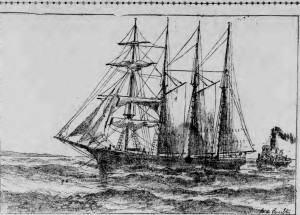
Before you put the fish back in Purissima Creek….
I’ve changed my mind, says John Vonderlin.
Email John ([email protected])
John Vonderlin: How did the fish get into tiny Purissima Creek anyway?
Story/Photos John Vonderlin
Email John ([email protected])
[Image: Town of Purisima (also spelled Purissima), circa 1870s.] 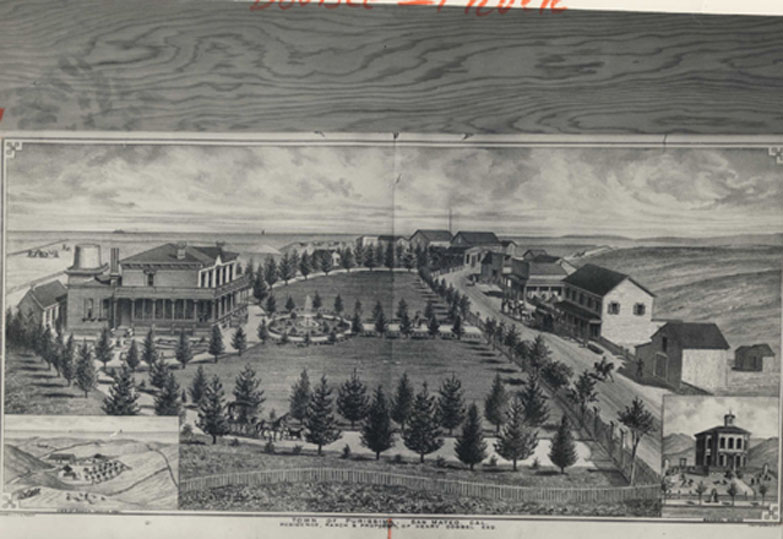
Hi June,
I think you’ll find this an interesting addition to the handful of excellent stories you have posted on HMB concerning Purisima (Purissima). This is an article from “The San Francisco Call,” of April 12, 1900.
Legislation on Fishing in San Mateo
Necessity of Closing Streams Another Month Questioned
On the last day of March, in an article on the trout streams of California the fishing expert of “The Call” commented adversely on the action of the Supervisors of San Mateo in passing an ordinance closing the fishing season until May 1. It was held that as all the fish have spawned by April 1 the closing of the season will be but of little benefit. As none of the adjoining counties have such a law, confusion to the anglers is sure to develop. The editor of “The Coast Advocate” of Halfmoon bay (sic) comes valiantly to the aid of the Superviors. (sic) Unfortunately, for him his argument is weak, as his various premises are not accurate.
The controversy was submitted by The Call to John P. Babcock, chief deputy of the California State Fish Commission and an authority on the game and food fish of the coast. Mr. Babcock supports unqualifiedly the statements of The Call in an interesting communication. He says:
The Coast Advocate is in error in saying that the “Purissima Creek is the most important trout stream in San Mateo County, and that it is not surpassed as a fishing ground by any stream in California.” The Purissima Creek does not compare favorably as a fishing stream with the San Gregoria, (sic) the Pescadero, or Butana, (sic) or their main tributaries.
The fish in the Purissima are numerous, but small. An eight-inch fish is a big one in that stream, and one of ten inches a “whale.”
The Purissima, however, is one of the best known streams in San Mateo County. The wayside inn established some forty years ago by Richard Dougherty upon its bank near its mouth gave it its reputation. “The Purissima House” has no equal of a stopping place on the coast, but it was “Dick’s” care for travelers and his wife’s cooking that made it so attractive. The fishing for small fish was good. They were of fine flavor and Mrs. Dougherty knew just how to cook them and just what to serve with them. Any one who was so fortunate as to eat a meal prepared by Mrs. Dougherty talked of its excellence for days after.
As time went by it was noised about that you must have fished the Purissima to know the real joy of angling, so that at any time in the early part of the season you were sure to find congenial sports there, and even though there were no fish over eight inches in length your catch from the Purissima, you came home, well convinced that fish do not contribute all of “fishing.” It is curious how the fish did get into the Purissima and how they maintain themselves there, for they cannot enter from the sea, and up to the time of Dick Doughtery’s death a few years ago as far is known the stream was not stocked with fish from any other water. Yet year after year fish continued to multiply and furnish creel after creel of small trout to the anglers who visited its water. As to the spawning period of the fish in the Purissima the writer is not as well informed, but they “do not entirely cease spawning until after May 1 and not a third have completed their work by April 1st” as the Coast Advocate says. The wonder of them maintaining themselves in such a limited water course is more the mystery.
In all the thirty odd years Dougherty lived there the stream was fished each year by hundreds. When a stream will stand such a strain for such a length of time one may well believe that Dick was right when he said, “You can’t fish ’em all out.”
So far as the writer knows the spawning season of the trout in the Purissima does not differ materially from those other streams in the county, namely, December to April. There may be a few who have not deposited their spawn by April 1, but they are the exception. The embryo of the next season’s spawn is large enough in April to be noticeable. This is true ever of trout that have just spawned.
If the present close season was observed there would be no necessity for a longer season in San Mateo county. It is commonly stated that little or no attention was paid to the closed season this year in San Mateo. It is even stated on April 1 there was a well-beaten track on both sides of San Gregorio and Pescadero Creeks. If the peace officers and Supervisors of San Mateo County would take steps to enforce the closed season under State law it would be of more benefit to the streams and the anglers who go there.
————————————–
While I’ve been unable to locate any further information about “The Purissima House” or Mr. and Mrs. Dougherty, I believe I have a reasonable answer to how the fish got in the creek. The answer is glaciers. The present sea level that makes the Purisima Falls an obstacle to fish wishing to return to ancestral spawning grounds from the ocean, has only existed for a blink of an eye in geologic terms. As you can see from this map I’ve attached  that even ten thousand years ago the sea level was still about 100 feet lower then it is now with the shoreline several miles west of where it is now. The Falls themselves were still covered with softer rock and soil that was washed away by waves as the waters rose to their present level. My guess it was probably only in the last five thousand and possibly much more recently that the falls became an impassable obstacle to the returning fish. It might even have been in just the last thousand years, after the sea level became stabilized, that the forces of erosion, both the stream’s flow lowering the creekbed’s level and the receding coastline caused by the unrelenting pounding of waves, created this wonderful waterfall and gave the stay at home trout genetic dominion over this watershed.
that even ten thousand years ago the sea level was still about 100 feet lower then it is now with the shoreline several miles west of where it is now. The Falls themselves were still covered with softer rock and soil that was washed away by waves as the waters rose to their present level. My guess it was probably only in the last five thousand and possibly much more recently that the falls became an impassable obstacle to the returning fish. It might even have been in just the last thousand years, after the sea level became stabilized, that the forces of erosion, both the stream’s flow lowering the creekbed’s level and the receding coastline caused by the unrelenting pounding of waves, created this wonderful waterfall and gave the stay at home trout genetic dominion over this watershed.
My understanding is that the Cowell/Purisima Trail won’t be open until Spring because of the need to build three substantial bridges, but you can check out this area and the progress they’d made as of Oct by checking out California Coastal Records Project (CCRP) Pictures # 20080795 (Cowell Beach Access Point) south to #200809829 (Poppy Point viewing area) CCRP has recently added two series of looking-straight-down high altitude photos, of which Picture #199300128008 is of the Falls and the nearby area, which certainly must include the site of “The Purissima House,” that the Doughertys made famous. My guess is the bare brown oval just above the Falls was the site, but that’s just because I would have put it there if I was building it. Enjoy. John
————————–
 that I added a P to indicate where I think “The Purissima House” was. This leveled spot with the to-die-for view, is somewhat lower then the surrounding land, giving it some shelter from the wind, easy gravity flow water to it and the sound of the stream and falls nearby to soothe you. With all the land on the flat above I can’t think of any other good reason they would have bothered to level this tiny, isolated patch otherwise. Enjoy. John
that I added a P to indicate where I think “The Purissima House” was. This leveled spot with the to-die-for view, is somewhat lower then the surrounding land, giving it some shelter from the wind, easy gravity flow water to it and the sound of the stream and falls nearby to soothe you. With all the land on the flat above I can’t think of any other good reason they would have bothered to level this tiny, isolated patch otherwise. Enjoy. JohnThe Charm of the One Pump Olympic Gas Station
The Olympic Gas Station once stood at Main and Highway 92.
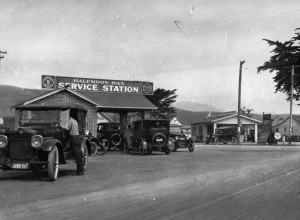
John Vonderlin: Maybe we better bail out the stagecoach companies of 1909
1949 Half Moon Bay High Reunion at Mezza Luna Restaurant

 Elaine Martini Teixeira joined her good friends for a very special Half Moon Bay High School reunion at Mezza Luna Restaurant, Princeton-by-the-Sea. Mezza Luna is located in the Princeton Hotel
Elaine Martini Teixeira joined her good friends for a very special Half Moon Bay High School reunion at Mezza Luna Restaurant, Princeton-by-the-Sea. Mezza Luna is located in the Princeton Hotel  an excellent example of Ocean Shore Railroad-era architecture.
an excellent example of Ocean Shore Railroad-era architecture.








Who’s Who?
Elaine says:
Top – on the left: Jack Bettencourt, Dick Picchi, myself, & LaVerne Pacheco, across on right: Sally Lea, Ugo Lea and Fred Cunha.
Next line, left side: Jack B. Dick P. ET, LaVerne P. Wilbur Azevedo, Cecilia Madonna and across table, backs to camera, Frank Ramacciotti, Guido Santaini, in red is Bobbie Pacheco.
Skipped a line, same people, except in one, next to Azevedo’s, the couple are Lina and Kenny Ormonde
Last line, I think, (as find, as I started to write this, can not keep going back to photos and coming back to this email), is Franka Ramacciotti, Loretta Santini, Stacy Teixiera and across table, Frank Ramacciotti and Guido Santini (backs to camera).
An Ocean Shore Ride, 1952: Story by Erich von Neff
An Ocean Shore Ride, 1952
As you pass Romano’s Restaurant*, going south, you will notice, on the spit, the remnants of a road which is now slowly sliding into the sea. But, as some of us, at least, will remember, it was not always this way.
The Ocean Shore Railroad had rumbled along those curves., hugging the cliffs, and, then, when it had defaulted in ’20, the Old Highway One followed the line. Well, for the most part.
Rumor has it that a starlet had driven a Cord off the road, an apparent suicide. Undoubtedly other cars had gone over the embankment. But it is the young and beautiful whose death tends to stick in the mind.
On an overcast winter morning we had rendezvoused at the Old Velodrome near Tenth and Market Streets in San Francisco. We proceeded down El Camino, and had swung over via La Honda to the coast.
We must have looked like throw backs in time preparing for the 1929 Berlin Six Day Race, or the New York Six.
Our silk jerseys, while perhaps not as colorful as those of today, reflected our ethnic origins or hometown, and not some anonymous plastics or cosmetics firm for which we had no use.
They sported in woven silken letters: Unione Sportiva Italiana, Deutsches Velo Klub, Norsk Sykell Klubb, Pedali Alpini, San Francisco Wheelmen, Belmont Bicycle Club, … .
We rode track bicycles with fixed gears, breaking with leather gloves that had been reworded by Italian shoemakers**, who had also put on our cleats.
Effeminate men, or worse, — we believed — road bikes which were not allowed in races even on the road, those of who who toured rode our track bikes even then.
Our track bikes had German names like Durkopp, Bauer, Schuhmacher, ,,, , Or, if they were an American marquee, they were made by men who looked like clones of Lem Motlow on the Jack Daniels label.
They, — Oscar Watson, Ken Winkie, Dewey Maxwell, Pop Brennan, — smoked cigars and brazed their machines beneath 55 [ed. 55 degrees] velodrome bankings.
Riders like, Willie the Whale, weighing close to three hundred pounds, tested them, riding motor pace on the track. The bikers were fitted with Durkopp or BSA hubs and cranks, the rims were made of laminated wood.
There were about thirty of us. The blue colors of the Unione Sportiva Italiana dominating the field of jerseys. Our cranks churned nearly the same cadence as we all rode nearly the same low winter gears, between 66 and 72 inches.
The wind shipped our legs. We inhaled air heavy with ocean spray. I followed Oscar Juner’s Durkopp jersey. Oscar and his partners, Nick van Male, and Peter Rich had raced at the Six Day Bike Race in San Francisco’s Civic Auditorium, and were now racing on Murphy Sabatino’s portable board track at the San Mateo County Fairgrounds.
We had passed Linda Mar and were now heading around the spit that lies south of Romano’s Restaurant. Beneath us the waves pounded the rocks. Ahead of the Durkopp jersey were other jerseys. Some of them I could not see through the fog.
One after the other, ominous shapes of riders drifted past me as we rotated pace.
We had rubbed our legs with Sloan’s liniment. They felt like fire at first. This subsided, then they were numb to the cold.
The pace slackened only slightly in the wind. We rotated more to maintain the momentum of the pace, than to insure that each of us took egalitarian distances. For instance, John Parks at six feet nine inches had enough wind in his face; he therefore, took shorter pulls at the front. Some, like Bruno and the Gatto brothers yelled oaths in Italian, when they felt the pace was not to their liking.
Riders swung off and rolled back to the rear of the pace line. The Durkopp jersey disappeared. I now took my pull at the front for about ten or twelve seconds, as I said, shorter pulls meant the momentum of our pace could be maintained even in thick fog and a head wind. Though this idea seemed on grate on Dan Kaljian who had formed his ideas of labor on his father’s farm near Avnik Armenia. When Dan took his turn he muscled the handlebars as if he still had a shovel in his hands.
The wind howled in my face as I tucked down for my pull at the front. I tore into the wind, yet was a particle in it.
Supposedly you do twenty percent more work at the front, but in the shifting head wind, it seemed as if that figure was greatly undeestimated.
I rolled off leaving the Norwegian sprint champion, Fred Fisk, to battle the wind. At some time in the latter part of the ride Fred had failed to hook John Parks’ wheel. At six feet five, reasonably Fred wanted to pace behind someone taller. At times I could hear him behind me cursing and swearing in Norwegian.
For John, of course, there would be no such pace line options.
I caught my breath now safely tucked in behind the Durkopp jersey again. Thankfully Dan Kaljian had suggested we warm up at the Boots and Saddles Bar in La Honda. Most of us had several belts of Christian Brothers brandy or Jack Daniels***. John Parks and Fred Fisk had vied each other for the attentions of the blonde. But, eventually, the ride had to resume, and she was left behind, but not alone.
Later in the ride we had refilled at Pete’s Cafe in Half Moon Bay.
I sucked more ocean spray and Sloan’s liniment into my lungs. We passed the spit . . . now slowly sliding into the sea, remnants of the curves still hugging the cliffs.
Beneath us, below the pounding waves, was the Cord.
—-
*Linda Mar, California, near San Francisco
**Such as Rosario Raieri of Balboa Shoe Service in San Francisco
***By Bartender and owner Oren Arms
An Ocean Shore Ride, 1952
As you pass Romano’s Restaurant*, going south, you will notice, on the spit, the remnants of a road which is now slowly sliding into the sea. But, as some of us, at least, will remember, it was not always this way.
The Ocean Shore Railroad had rumbled along those curves., hugging the cliffs, and, then, when it had defaulted in ’20, the Old Highway One followed the line. Well, for the most part.
Rumor has it that a starlet had driven a Cord off the road, an apparent suicide. Undoubtedly other cars had gone over the embankment. But it is the young and beautiful whose death tends to stick in the mind.
On an overcast winter morning we had rendezvoused at the Old Velodrome near Tenth and Market Streets in San Francisco. We proceeded down El Camino, and had swung over via La Honda to the coast.
We must have looked like throw backs in time preparing for the 1929 Berlin Six Day Race, or the New York Six.
Our silk jerseys, while perhaps not as colorful as those of today, reflected our ethnic origins or hometown, and not some anonymous plastics or cosmetics firm for which we had no use.
They sported in woven silken letters: Unione Sportiva Italiana, Deutsches Velo Klub, Norsk Sykell Klubb, Pedali Alpini, San Francisco Wheelmen, Belmont Bicycle Club, … .
We rode track bicycles with fixed gears, breaking with leather gloves that had been reworded by Italian shoemakers**, who had also put on our cleats.
Effeminate men, or worse, — we believed — road bikes which were not allowed in races even on the road, those of who who toured rode our track bikes even then.
Our track bikes had German names like Durkopp, Bauer, Schuhmacher, ,,, , Or, if they were an American marquee, they were made by men who looked like clones of Lem Motlow on the Jack Daniels label.
They, — Oscar Watson, Ken Winkie, Dewey Maxwell, Pop Brennan, — smoked cigars and brazed their machines beneath 55 [ed. 55 degrees] velodrome bankings.
Riders like, Willie the Whale, weighing close to three hundred pounds, tested them, riding motor pace on the track. The bikers were fitted with Durkopp or BSA hubs and cranks, the rims were made of laminated wood.
There were about thirty of us. The blue colors of the Unione Sportiva Italiana dominating the field of jerseys. Our cranks churned nearly the same cadence as we all rode nearly the same low winter gears, between 66 and 72 inches.
The wind shipped our legs. We inhaled air heavy with ocean spray. I followed Oscar Juner’s Durkopp jersey. Oscar and his partners, Nick van Male, and Peter Rich had raced at the Six Day Bike Race in San Francisco’s Civic Auditorium, and were now racing on Murphy Sabatino’s portable board track at the San Mateo County Fairgrounds.
We had passed Linda Mar and were now heading around the spit that lies south of Romano’s Restaurant. Beneath us the waves pounded the rocks. Ahead of the Durkopp jersey were other jerseys. Some of them I could not see through the fog.
One after the other, ominous shapes of riders drifted past me as we rotated pace.
We had rubbed our legs with Sloan’s liniment. They felt like fire at first. This subsided, then they were numb to the cold.
The pace slackened only slightly in the wind. We rotated more to maintain the momentum of the pace, than to insure that each of us took egalitarian distances. For instance, John Parks at six feet nine inches had enough wind in his face; he therefore, took shorter pulls at the front. Some, like Bruno and the Gatto brothers yelled oaths in Italian, when they felt the pace was not to their liking.
Riders swung off and rolled back to the rear of the pace line. The Durkopp jersey disappeared. I now took my pull at the front for about ten or twelve seconds, as I said, shorter pulls meant the momentum of our pace could be maintained even in thick fog and a head wind. Though this idea seemed on grate on Dan Kaljian who had formed his ideas of labor on his father’s farm near Avnik Armenia. When Dan took his turn he muscled the handlebars as if he still had a shovel in his hands.
The wind howled in my face as I tucked down for my pull at the front. I tore into the wind, yet was a particle in it.
Supposedly you do twenty percent more work at the front, but in the shifting head wind, it seemed as if that figure was greatly undeestimated.
I rolled off leaving the Norwegian sprint champion, Fred Fisk, to battle the wind. At some time in the latter part of the ride Fred had failed to hook John Parks’ wheel. At six feet five, reasonably Fred wanted to pace behind someone taller. At times I could hear him behind me cursing and swearing in Norwegian.
For John, of course, there would be no such pace line options.
I caught my breath now safely tucked in behind the Durkopp jersey again. Thankfully Dan Kaljian had suggested we warm up at the Boots and Saddles Bar in La Honda. Most of us had several belts of Christian Brothers brandy or Jack Daniels***. John Parks and Fred Fisk had vied each other for the attentions of the blonde. But, eventually, the ride had to resume, and she was left behind, but not alone.
Later in the ride we had refilled at Pete’s Cafe in Half Moon Bay.
I sucked more ocean spray and Sloan’s liniment into my lungs. We passed the spit . . . now slowly sliding into the sea, remnants of the curves still hugging the cliffs.
Beneath us, below the pounding waves, was the Cord.
—-
*Linda Mar, California, near San Francisco
**Such as Rosario Raieri of Balboa Shoe Service in San Francisco
***By Bartender and owner Oren Arms
xxxxxxxxxxxxxxxxxxxxxxxxx
About the author:
Erich von Neff is a San Francisco Longshoreman. He received his masters degree in philosophy from San Francisco State University and was a graduate research students at the University of Dundee, Scotland. Erich von Neff is well known on the French avant-garde and mainstream literary scenes. he is a member of the Poetes Francais and La Societe des Poetes et Artistes de France.
The Soft & Hard Surfaces of Pillar Point: Images by John Vonderlin
For the Genealogist in Your Family
What’s a “Genealogist?” Please click here
Births, Marriages, Deaths, Probates , it’s all here, marked by a B, M, D, or P.

“Californians are a race of people; they are not merely inhabitants of a State.” O. Henry (author)
The O. Henry quote is from“California Rich” by Stephen Birmingham, originally published by Simon & Schuster (1980)
Out-of-print, available in the used book market. Good, fun read.
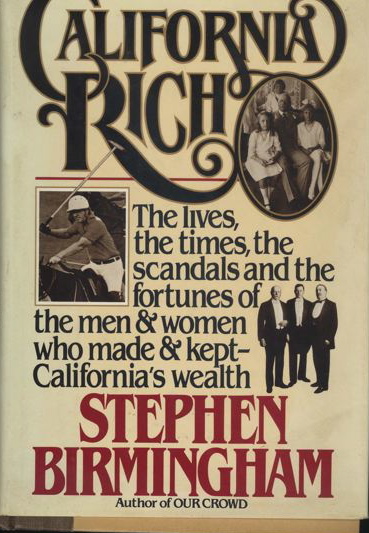
Also: 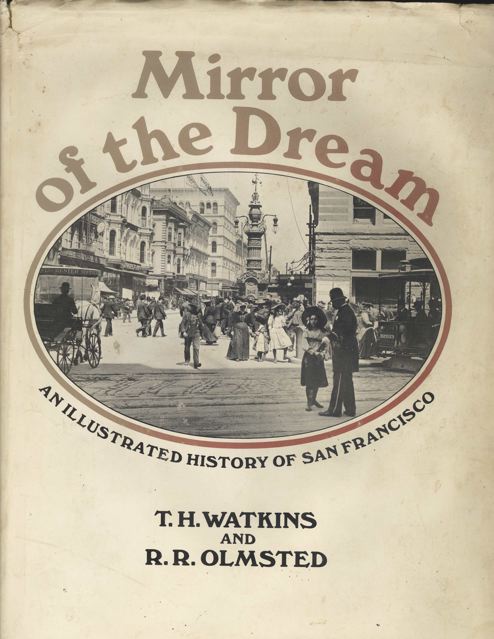
From the book flap of “California Rich”
“Since the Gold Rush of 1849 California has represented The Promised Land for a special breed of Americans. In pursuit of sunshine, riches and elusive dreams they set out to make their fortunes–and often succeeded in ways they could not have expected. Prospectors became oil tycoons, squatters became cattle barons and farmer’s wives became the grande dames of a new rough-hewn society. Their tales of striking it rich have long been part of the California dream that lures people still to California’s farthest shore.
In California Rich Stephen Birmingham combines exciting social history with often hilarious anecdotes to show how the ruling class of California was born, and how it evolved a lifestyle which has gained the fascination of the world. It is filled with striking portraits of the Stanfords, the Hungtingtons, the Hearsts, the Irvines and others whose lives and fortunes made history in the Golden State….”
“Mirror of the Dream” was designed by John Beyer, who was great at his craft. John Beyer also designed the inside pages of my out-of-print book, “Half Moon Bay Memories: The Coastside’s Colorful Past (1978). The cover of “Memories” was created by well known Coastside graphic art designer Jim Rudolph.


